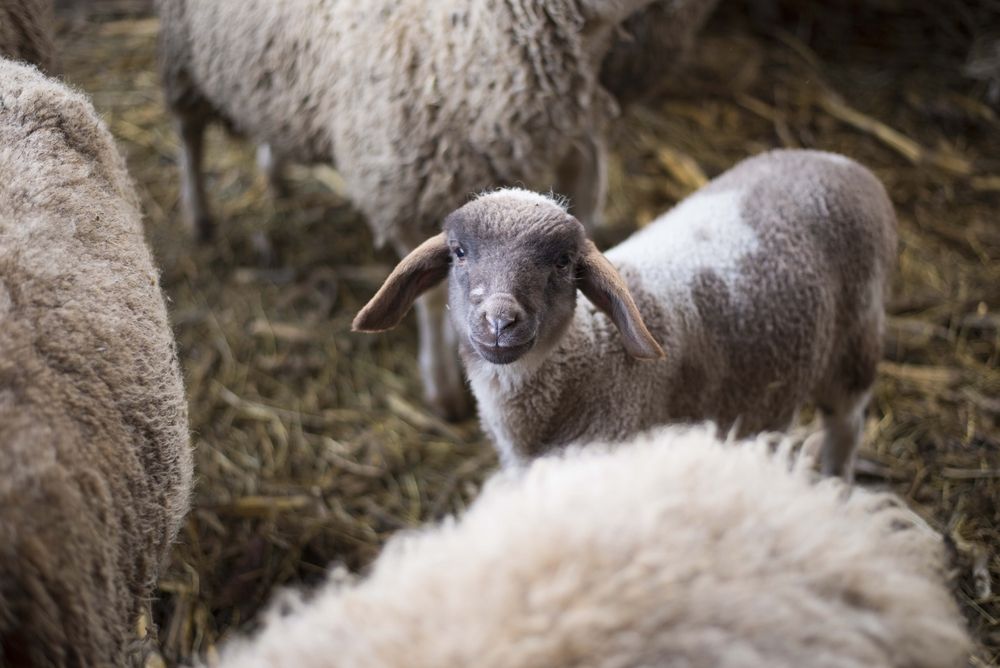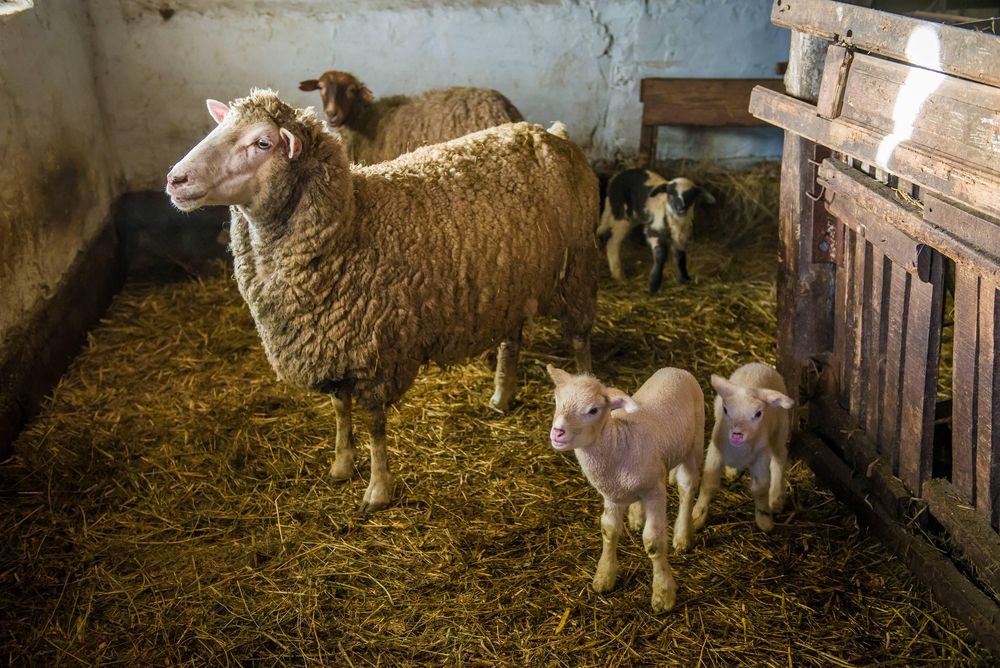Description of the little lambs
The lamb is a very vulnerable creature and requires maximum attention. It especially needs proper nutrition, the presence of a mother-sheep and care. Creating comfortable conditions for lambs in the first days of life is the main concern of the farmer.

Features of caring for lambs
How to change the diet as lambs mature? Who can care for babies? What if lambs are raised without a queen? How can you arrange for a healthy, lean lamb? How long must it take before taking the baby away from the mother? This article is devoted to the answers to these questions.
Care after birth
There are cases when only born lambs did not survive after several hours of life. Why did it happen and what to do? Despite many factors beyond the control of the farmer, human care for livestock is an important condition for the development of animals. A ram and a lamb parenting newborn lambs should be examined. Knowing the approximate date when the lambs can lamb, it is necessary to prepare a stable or barn for the lambs in advance.

Lambs barn
The main conditions are cleanliness, the presence of a thick layer of hay or other insulating substances and a low level of humidity. The optimum temperature in the pen should be between 18 and 25 ° C.
What is the plan of action after the sheep have been relieved of the burden? The farmer is required to:
- check the condition of the sheep and its internal organs;
- clean the oral cavity of the lambs from the accumulated mucus with a soft dry cloth;
- watch the ewe, she must lick the baby; also 5-7 hours after the birth of the baby, the afterbirth should come out;
- cut the umbilical cord from a clean lamb to 7-9 cm, after processing with iodine.
When the afterbirth came out of the ewe, she develops a strong thirst, which is allowed to be quenched only with warm boiled water every 2-3 hours. The farmer is obliged to wash the udder and express some colostrum, because healthy lambs will want to eat in 15-25 minutes and will taste their mother's milk. Lambs are admitted to the queens immediately after checking the condition of both.
It is advisable to use only sterile dishes for feeding. Any contact with bacteria can be fatal. Meals should be distributed carefully and, if possible, feed at the same time every day.
How to feed properly
The condition of the lambs and their behavior should be constantly monitored. If your baby is grinding his teeth, this could be an indicator of white muscle disease or ataxia. You should check if the lamb falls, how it behaves in the pen, what is its breathing. Babies are prone to poisoning, the first symptom of which is that the cub is grinding its teeth, it has seizures and poor coordination. In this case, it is better to seek help from a veterinarian.
Factors affecting the weight of babies
Any farmer knows that the liveliness of a lamb directly depends on the way of life of the ewes.The sheep need to be kept warm to meet nutritional requirements. Other factors that affect the live weight of young lambs are the following:
- the breed with which lambs are distinguished according to various criteria, including in terms of weight;
- the sex of the newborn, because usually males are larger than females;
- the size of the sheep's uterus in which the fetus develops;
- the number of cubs in the offspring, because not every sheep is able to go out and feed more than 3 babies;
- the age of the pregnant lamb: the young give small-sized lambs with weak immunity;
- correctly selected diet, on which the weight of the unborn baby depends.
Small lambs with low weight develop much worse than large ones. They have a slowed down process of puberty, difficulties may arise with complementary feeding and walking. They need to be closely monitored so that after weaning from the sheep, they can live normally.
Artificial feeding
The farmer should divide bottle-fed feeding into conditional portions lasting several days or weeks. It is imperative that when babies are born, it is necessary to determine their purpose: suitability for dairy or down production. For what? The diet for both cases is different and with an incorrect target definition, you may not get the desired result.

Feeding the lamb with milk
If it was decided to raise lambs to get milk in the future, then the first important period is 2 weeks after birth, during which you need to water the baby according to a certain schedule. The main requirement is to give the lamb warm or warmed milk in a bottle about 5-6 times a day with a break of 3 hours. It should be kept slightly below the head location for the convenience of the animal, which eats slowly and in small quantities. Bottles and teats are excellent udder substitutes for IV, which should be rubber.
Feed dosage and vitamin supplements
The dosage in the first week is 100-150 g, in the second - 150-250 ml per day. Further, it is necessary to increase the consumption of a dairy product by 100 g weekly until one month of age. After the onset of the period from 3 to 6 weeks, it is necessary to enter 4 meals a day, and from the seventh - 3 meals a day.
Research by scientists has shown that lamb also needs fatty foods. From the age of one month, it is important to introduce mineral supplements represented by:
- bone meal;
- salt;
- fish oil;
- chalk;
- honey.
By their composition, they are rich in useful trace elements and vitamins. Their function is to strengthen the bones of the lamb and normalize the processes of digestion and assimilation of food. Some of them are catalysts for the development of the animal's muscular system, provided that the baby eats them well.
For 3 weeks, it is allowed to diversify the diet with the help of root vegetables, which are important to give the lamb in small portions, grated or finely chopped. They are additionally fed with crimped grain, but not more than 30 g per 1 meal. Over time, portions should increase by 50 g, and after the 30th week, add 10 g every day.
It is also necessary to ensure that the baby's belly does not swell and provoke diarrhea. Attention should also be paid to how much and with what frequency the lamb eats, what kind of behavior it shows, etc. These factors can also indicate gastrointestinal problems.
Market demand
The fur coat of young lambs is in great demand in the light industry market. Castration in combination with good care will make the fur silky, smooth and of high quality.
The meat of small lambs is considered the most delicious and juicy in meat production. The use of lamb carcasses is found more and more. Various organs and parts of the body are used in the preparation of kebabs, stews, for broth and soups, pilaf, baking, etc. On average, one ram has a carcass weight of about 15-20 kg.
The right care is a must if the farmer wants the lamb to become an object of sale, the lamb has good quality indicators, and the taste of the milk is pleasant and sweet. The sale of products brings a good profit to the farmer.


